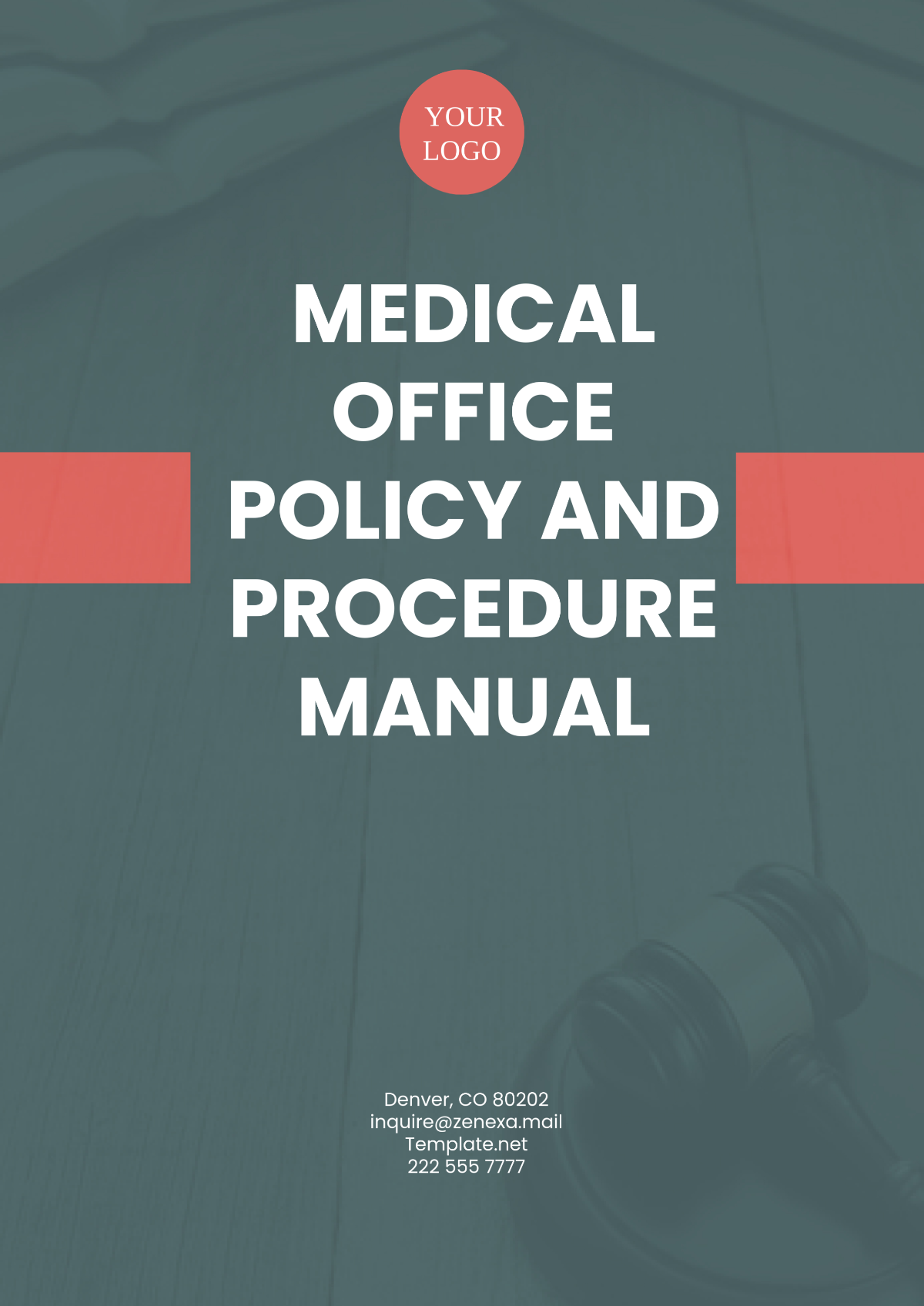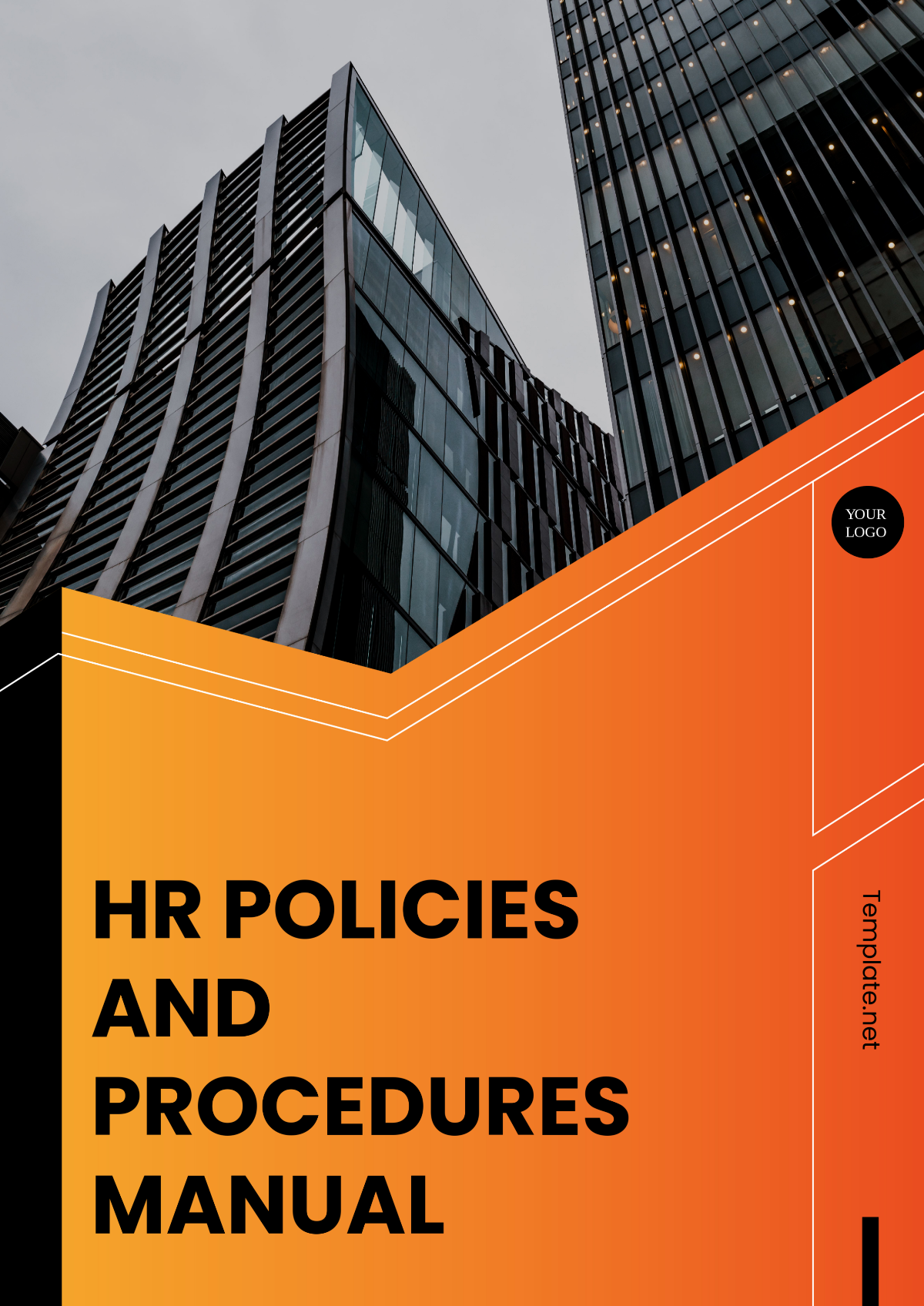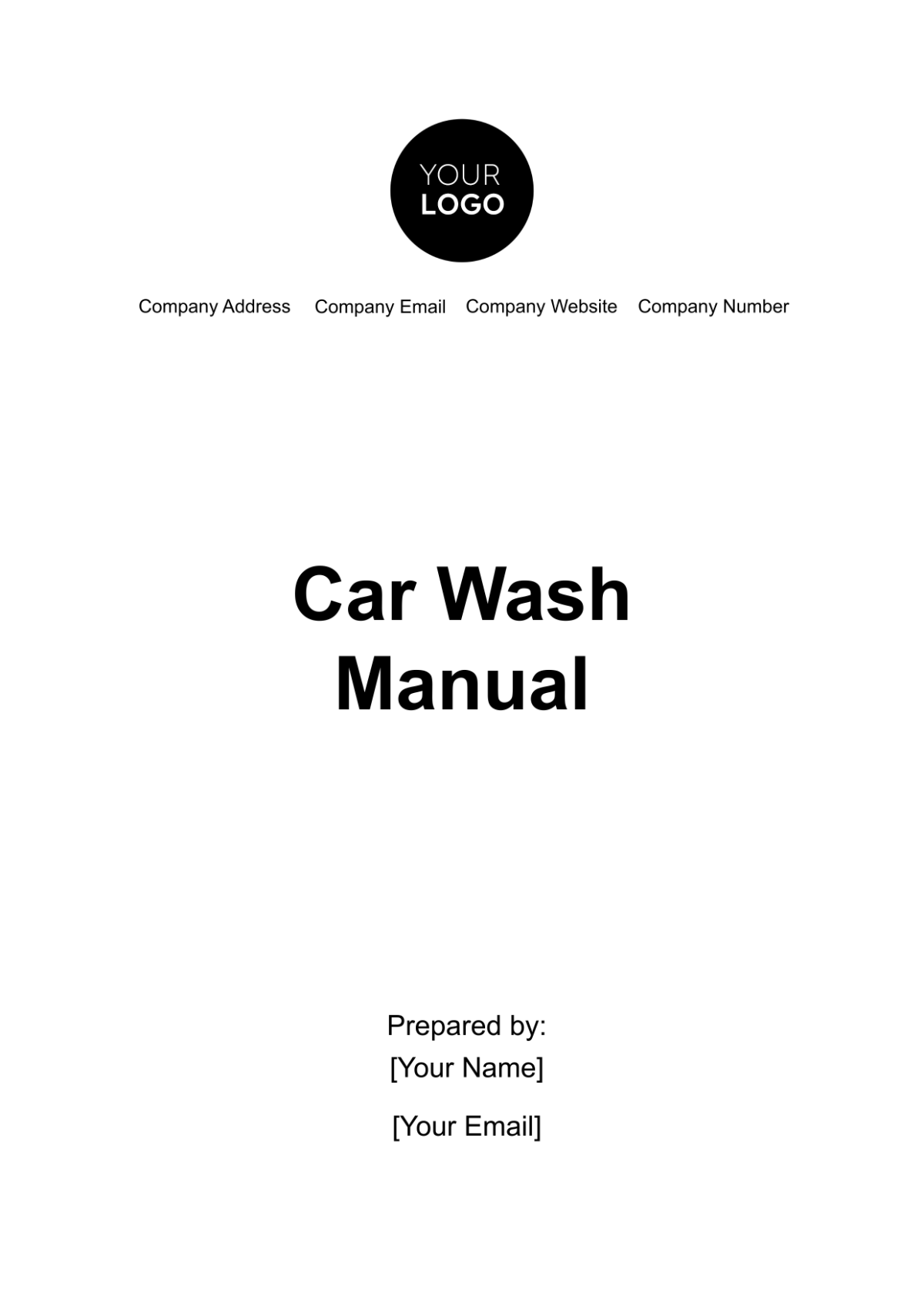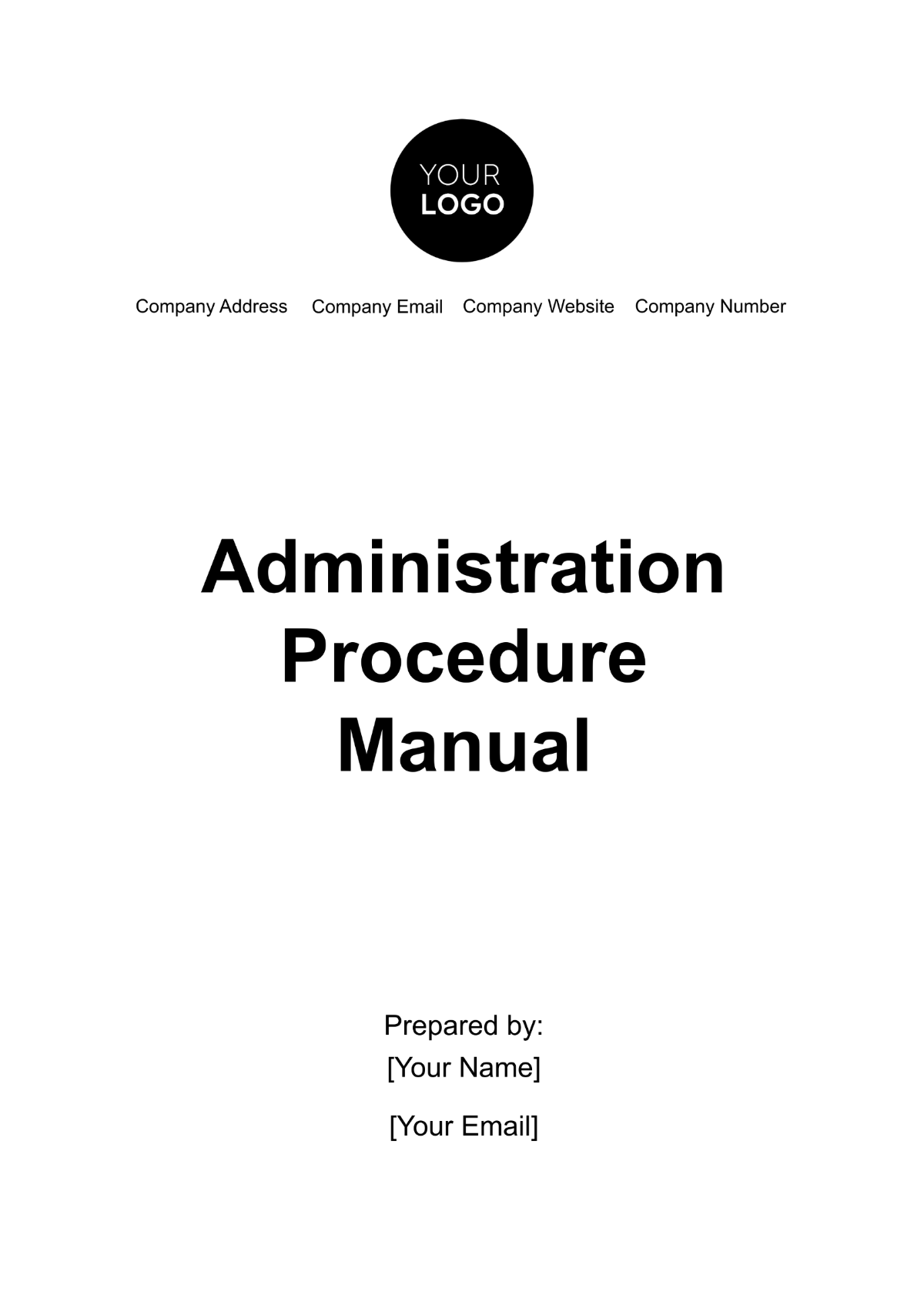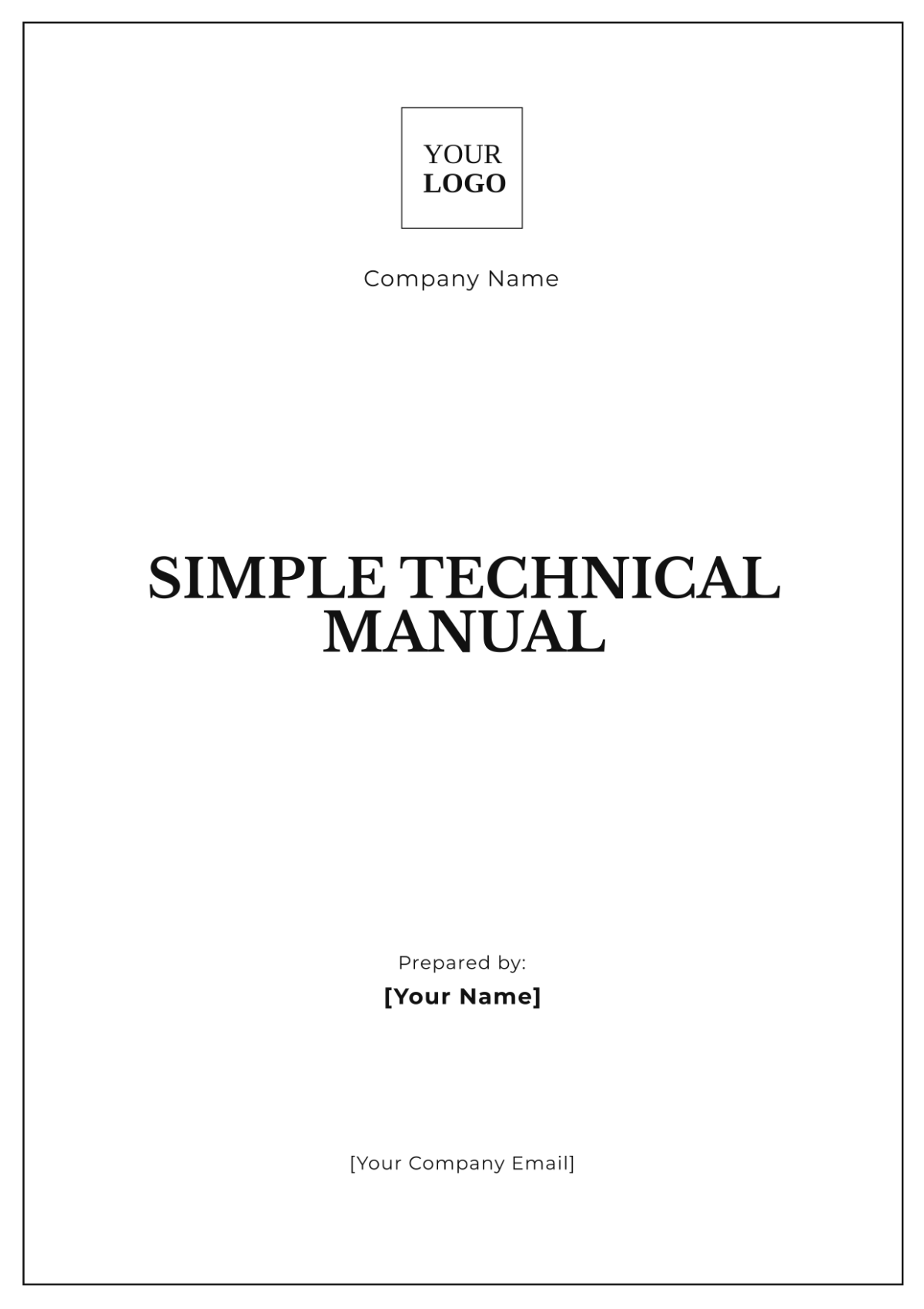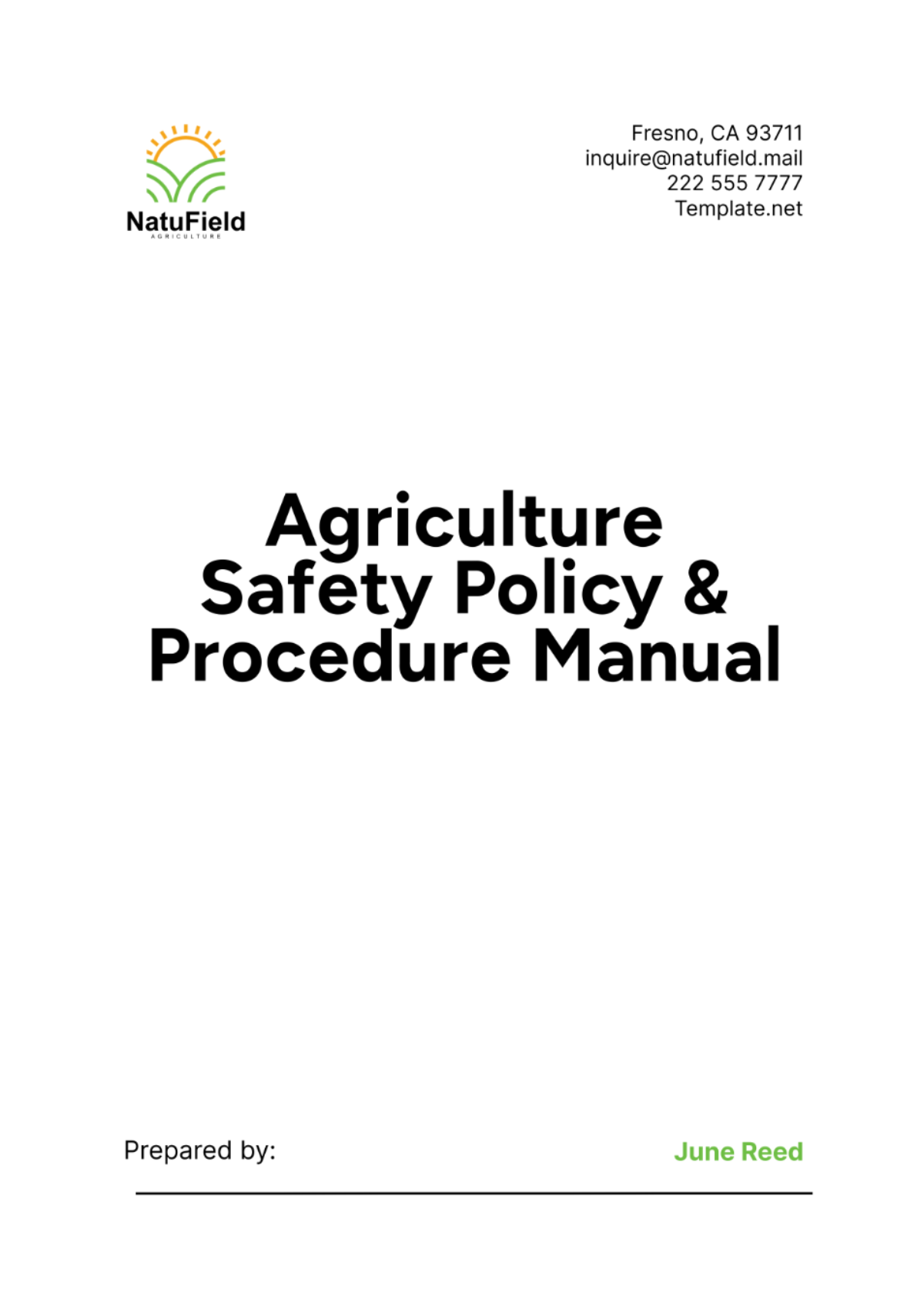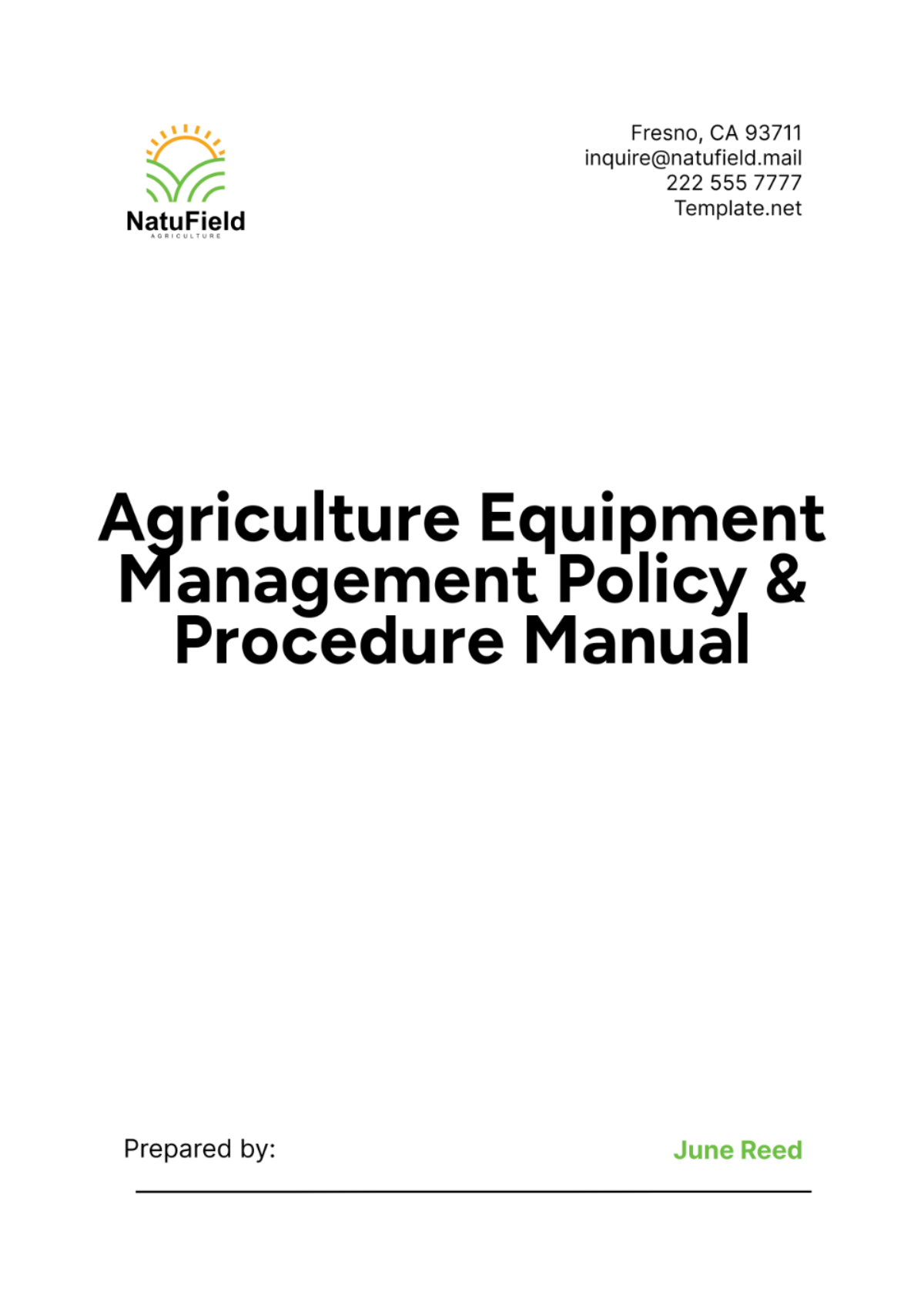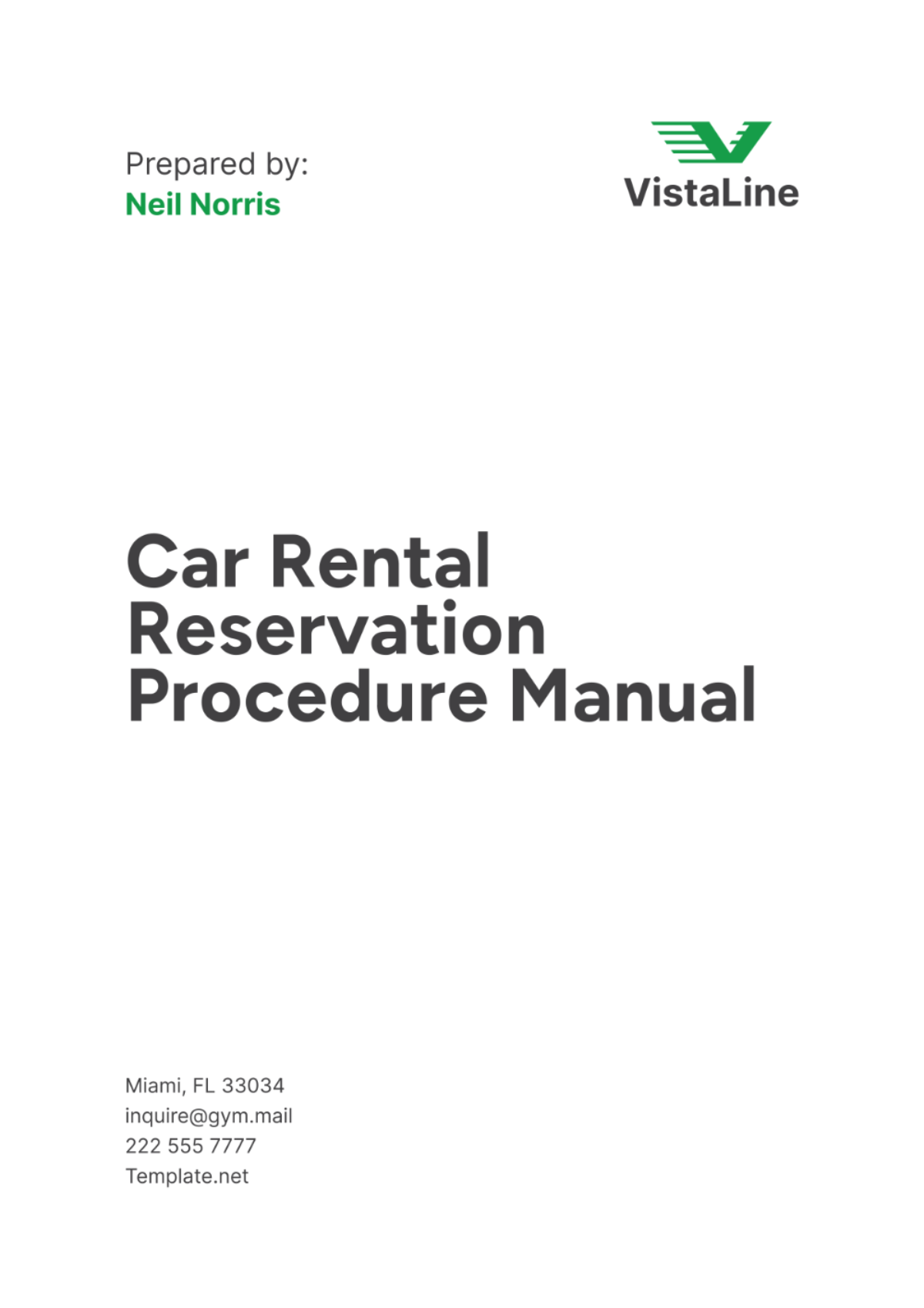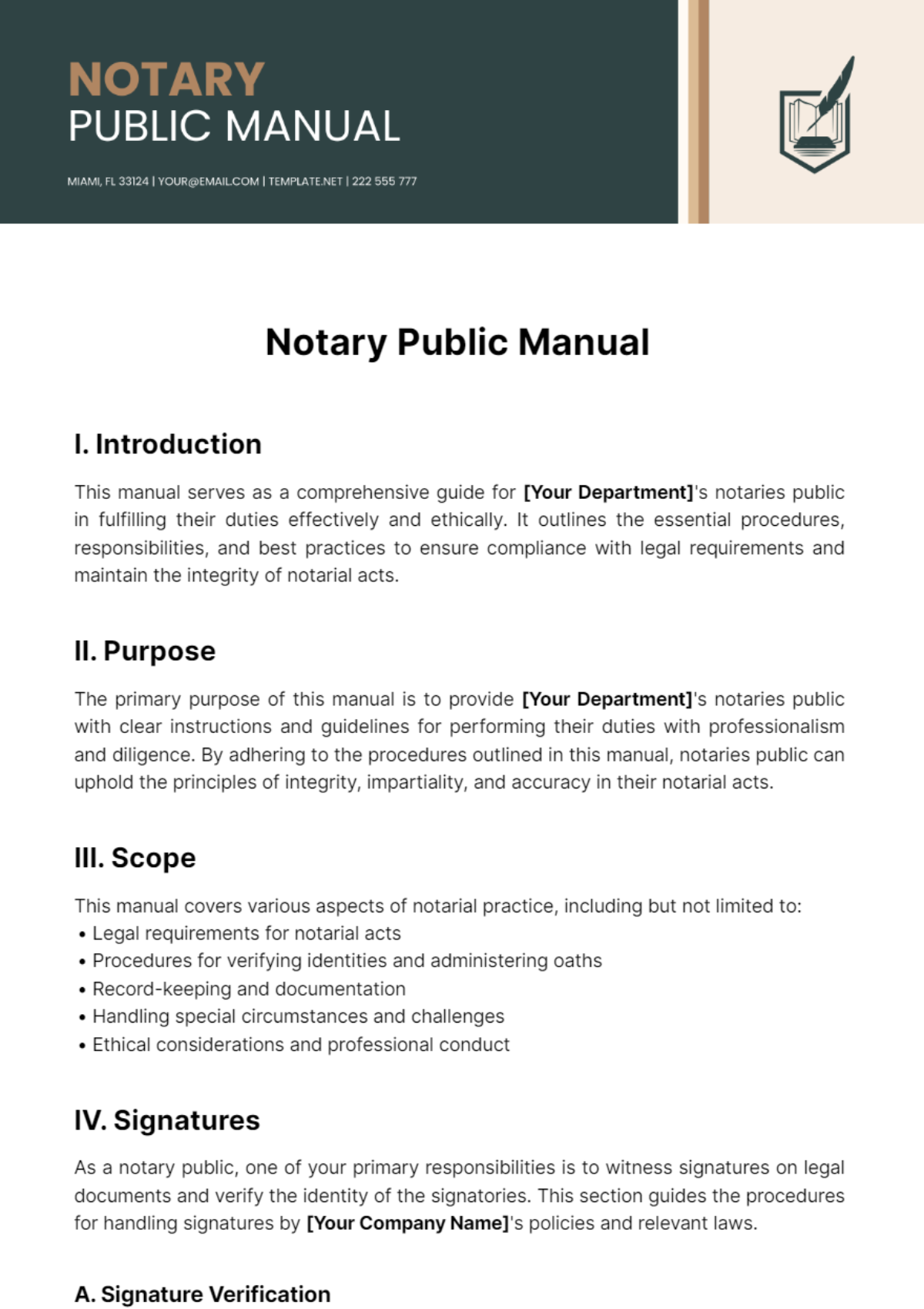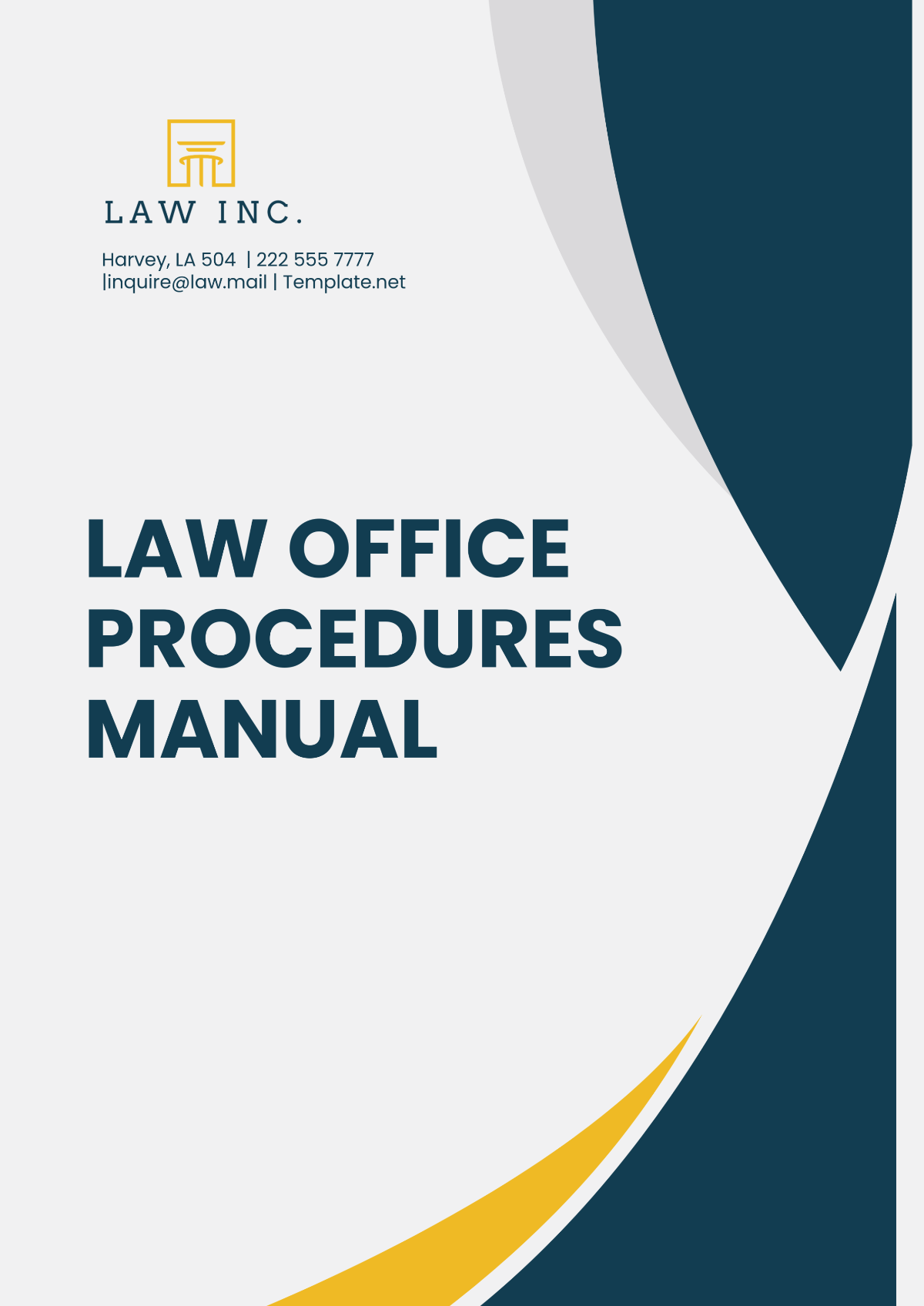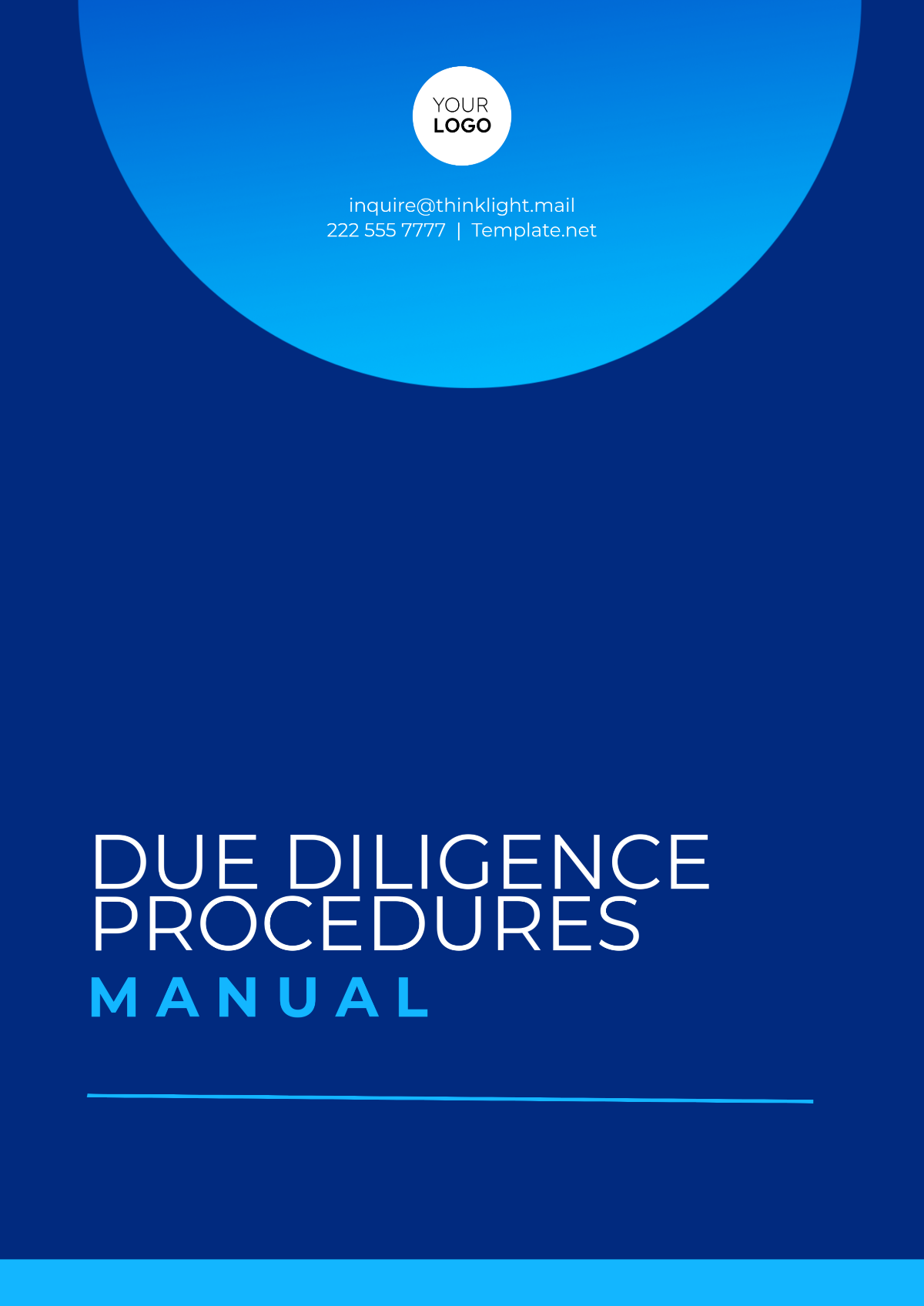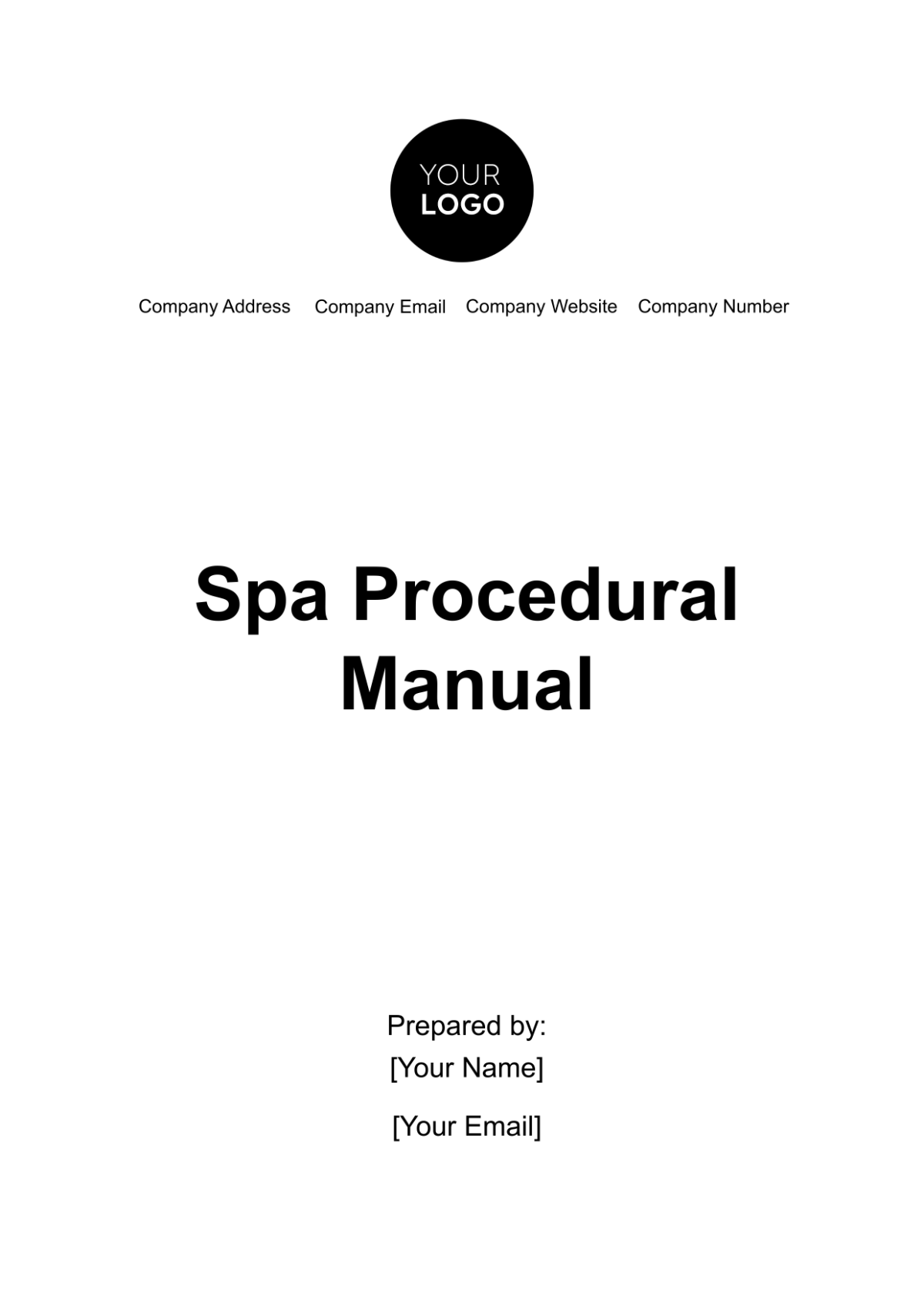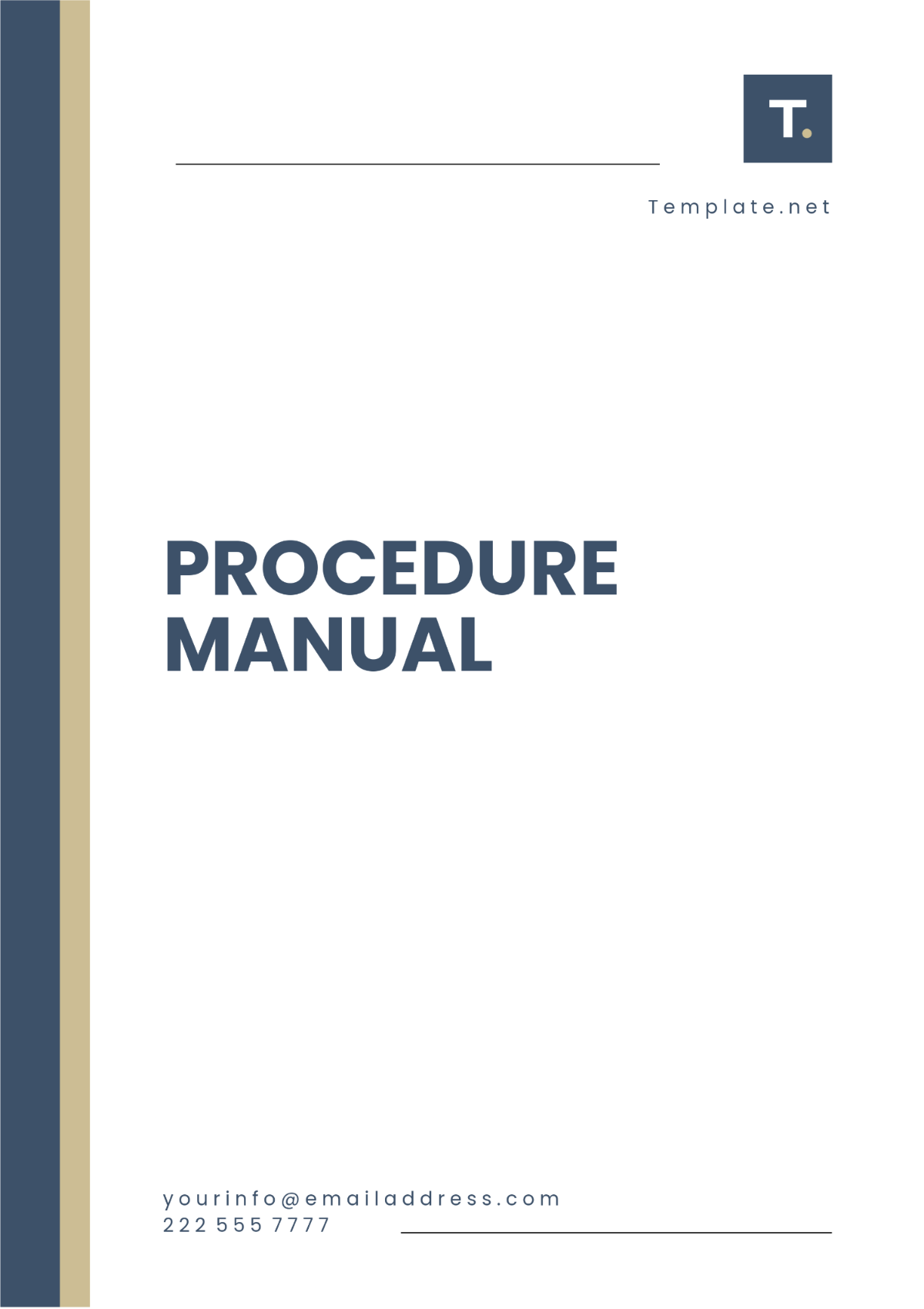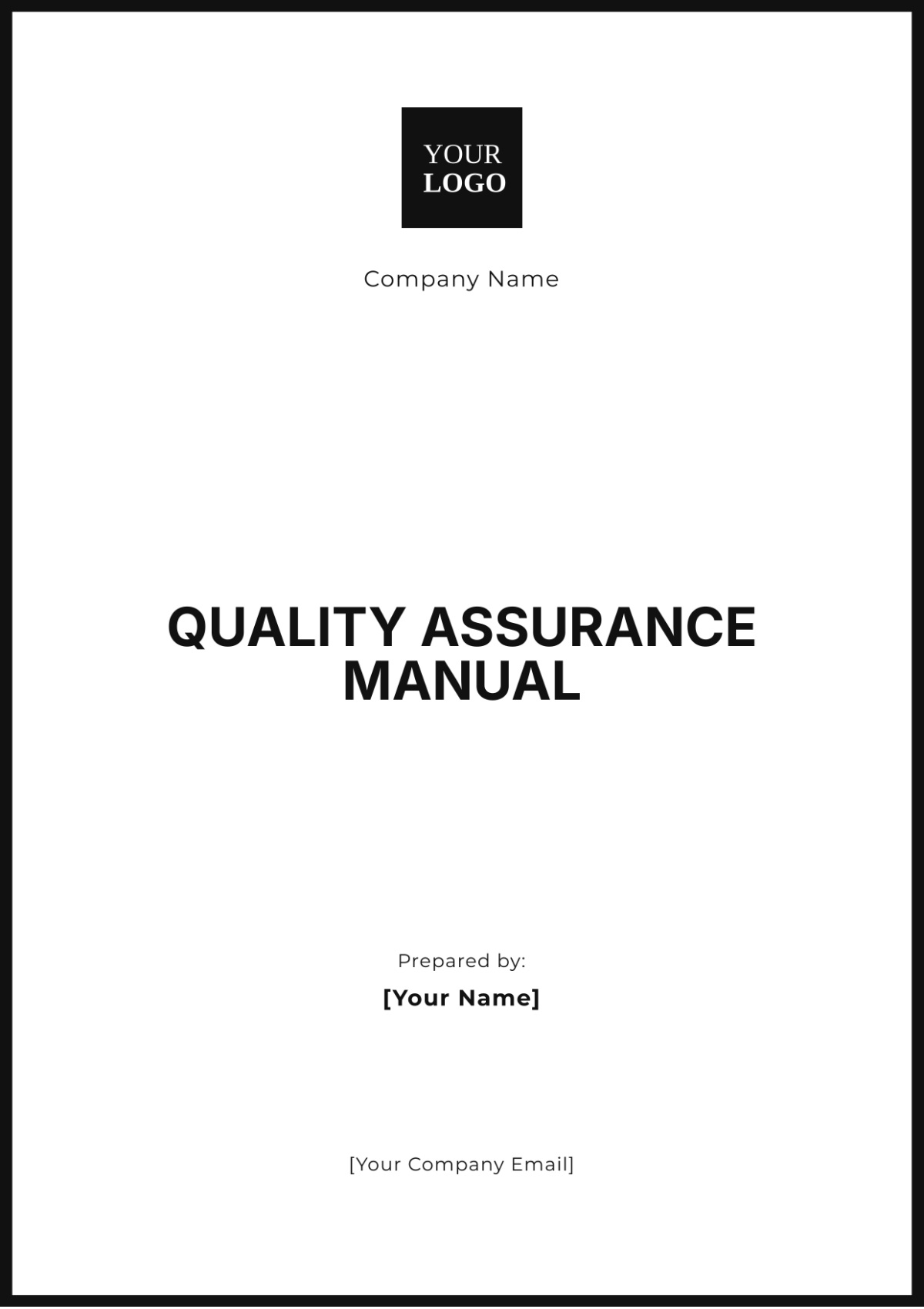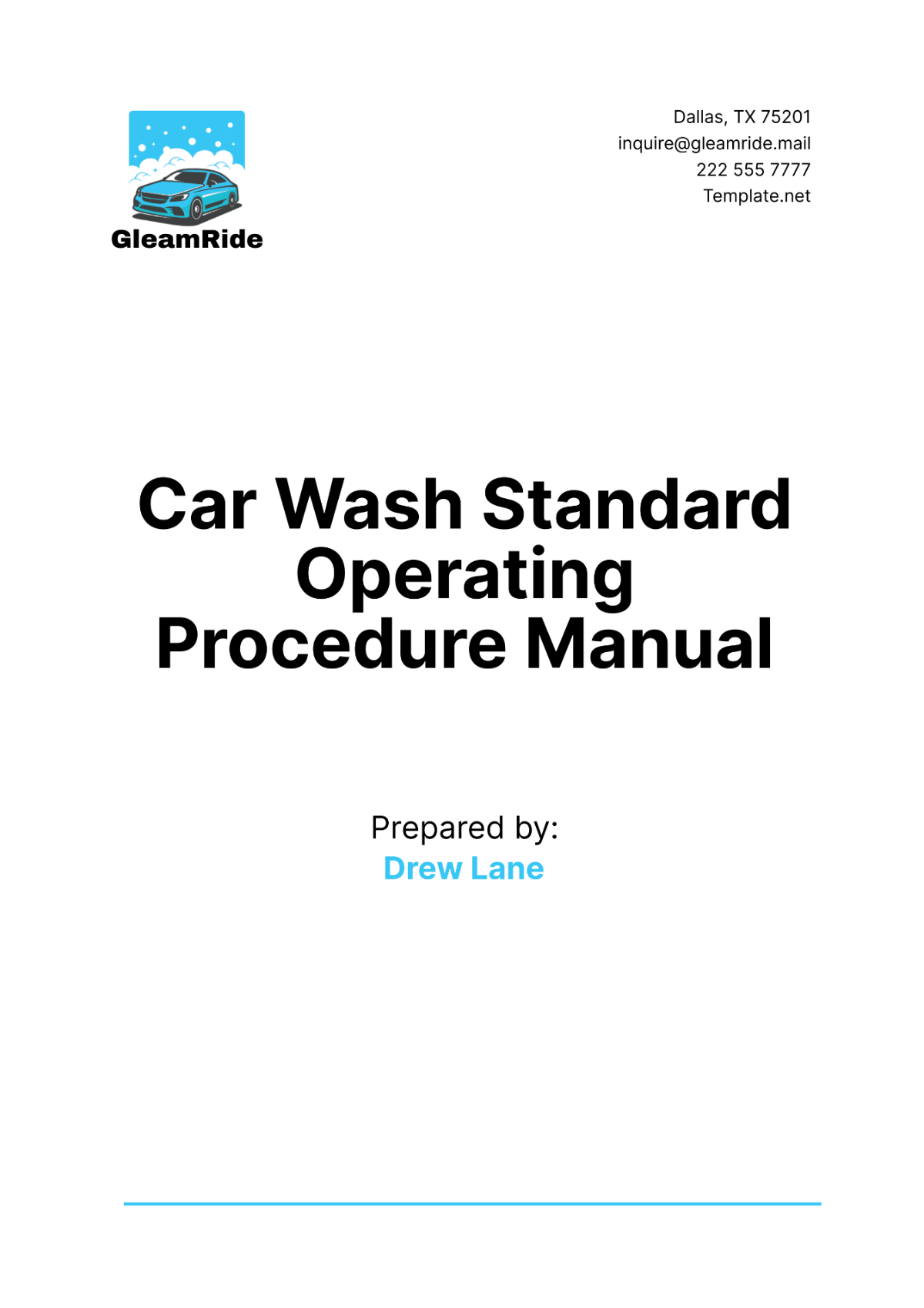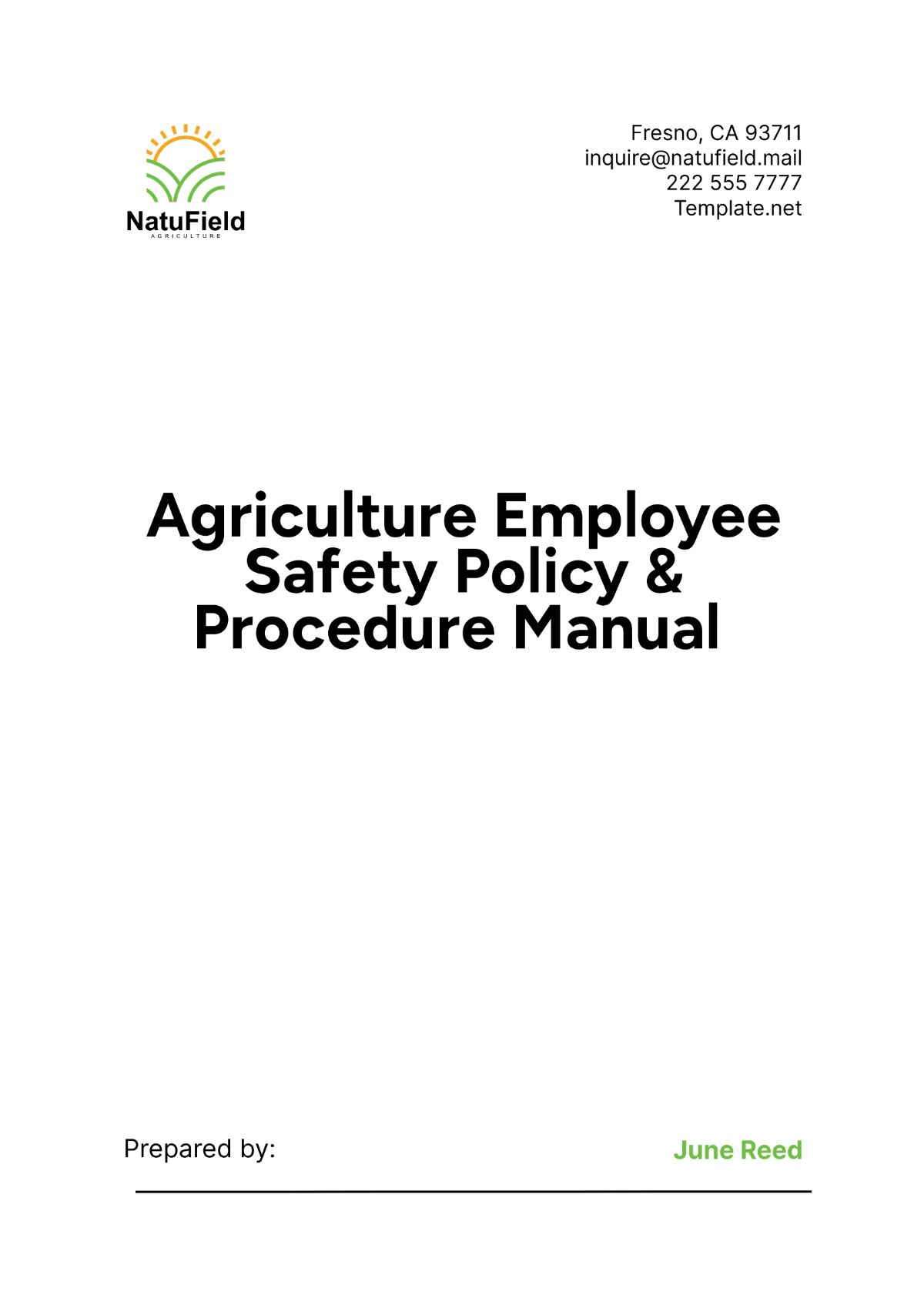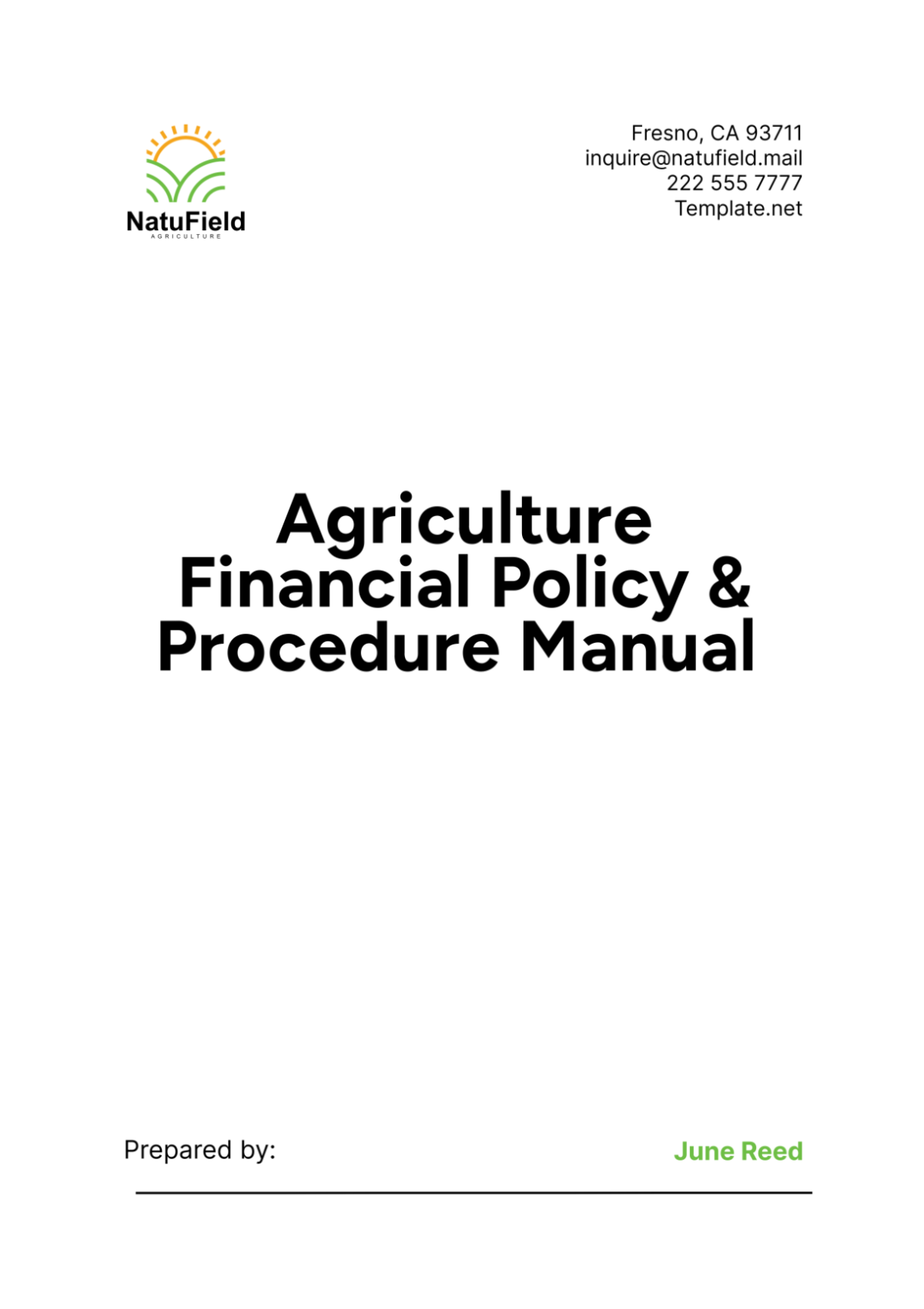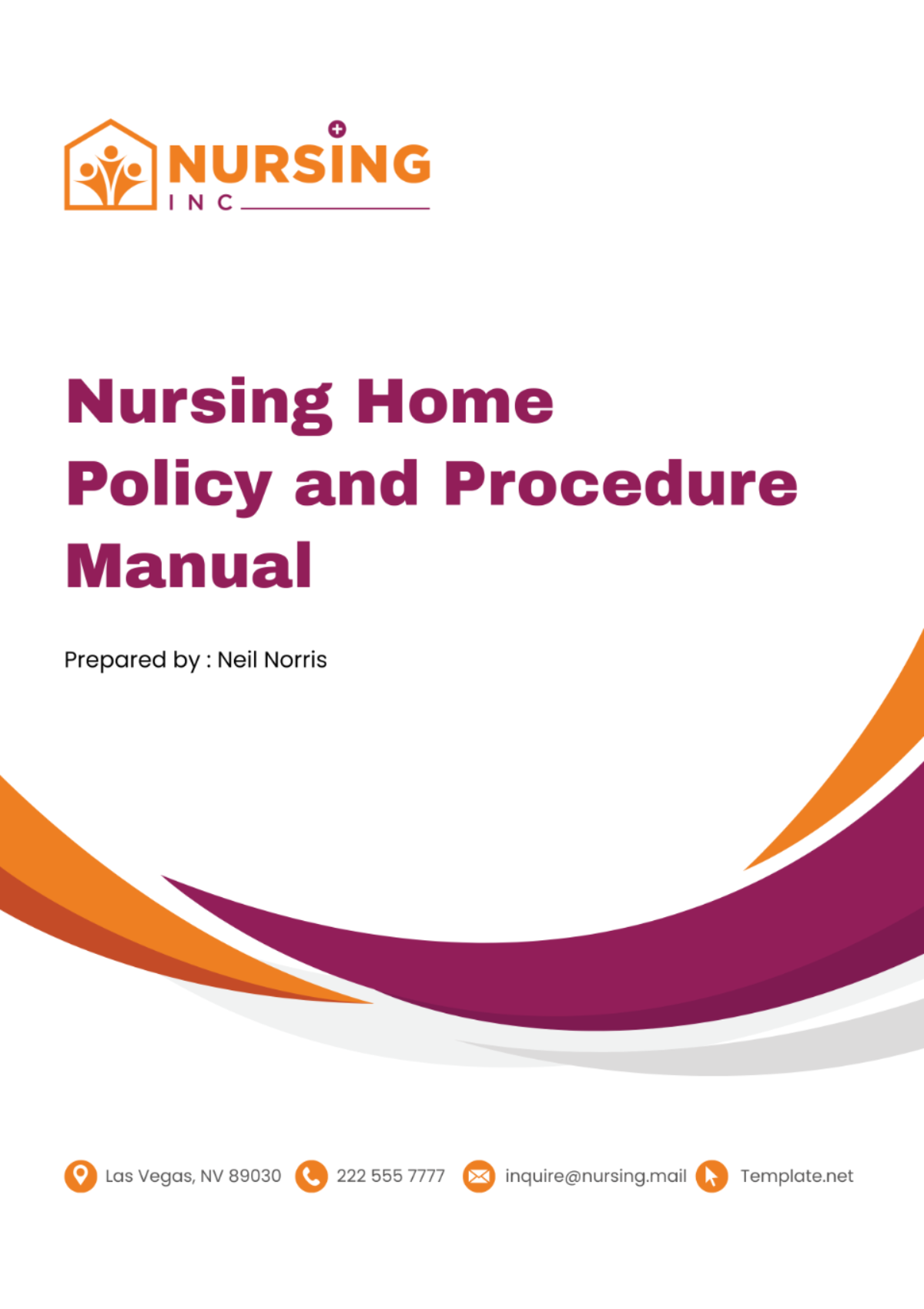I. Introduction
A. Overview
This Policy & Procedure Manual serves as a comprehensive guide to the practices and procedures related to Administration meetings at [Your Company Name]. It is designed to ensure that all meetings are conducted in an efficient, effective, and consistent manner. This will help to facilitate clear communication, informed decision-making, and overall organizational effectiveness.
The guidelines outlined in this manual apply to all employees involved in Administration Meetings. This includes those who organize the meetings, those who participate in them, and those who are responsible for implementing the decisions made during the meetings. By adhering to the practices and procedures outlined in this manual, employees can contribute to a productive meeting culture at [Your Company Name]. This will ultimately lead to improved team collaboration, better decision-making, and enhanced business outcomes.
B. Objectives
Provide Clear Guidelines: The manual provides clear and detailed guidelines on the conduct of Administration Meetings. This ensures that all meetings are conducted in a consistent and standardized manner.
Ensure Productivity: The manual aims to ensure that meetings are productive and achieve their intended outcomes. This is achieved by providing guidelines on meeting preparation, conduct, and follow-up.
Promote Effective Communication: The manual promotes effective communication within the organization. It provides guidelines on how to communicate effectively during meetings, ensuring that all participants have a clear understanding of the meeting objectives and outcomes.
Foster Accountability and Transparency: The manual fosters a culture of accountability and transparency in the decision-making process. It provides guidelines on how decisions are made during meetings and how these decisions are communicated and implemented.
Enhance Efficiency: The manual enhances the efficiency of meetings by providing guidelines on meeting preparation, conduct, and follow-up. This ensures that meetings are conducted in a timely and efficient manner.
C. Target Audience
Meeting Organizers: The manual is intended for all employees who are involved in organizing Administration Meetings. It provides them with the necessary guidelines to plan and organize effective meetings.
Meeting Participants: The manual is also intended for all employees who participate in Administration Meetings. It provides them with the necessary guidelines to effectively participate in and contribute to the meetings.
Decision Implementers: The manual is also intended for all employees who are responsible for implementing the decisions made during Administration Meetings. It provides them with the necessary guidelines to effectively implement the decisions.
New Employees: New employees who need to understand the meeting procedures at [Your Company Name] are also a target audience for this manual. It provides them with a comprehensive overview of the meeting procedures.
Existing Employees: Existing employees who need a refresher on the meeting procedures are also a target audience for this manual. It provides them with a comprehensive overview of the meeting procedures.
II. Meeting Policy
A. Regular Meetings
Frequency: Regular meetings at [Your Company Name] are held on a weekly basis. These meetings provide an opportunity for teams to discuss ongoing projects, address any issues, and plan for the upcoming week.
1.1. Weekly Discussions: These discussions allow for continuous progress monitoring of ongoing projects. They provide a platform for team members to share updates, discuss challenges, and brainstorm solutions. This regular exchange of information ensures that all team members are aligned and working towards the same goals.
1.2. Issue Resolution: Regular meetings provide a platform for immediate issue identification and resolution. Team members can raise any concerns or issues they are facing, allowing the team to collectively find solutions. This proactive approach to problem-solving helps to prevent small issues from escalating into bigger problems.
1.3. Planning: Weekly meetings also serve as a planning platform for the upcoming week. Team members can set goals, assign tasks, and establish timelines. This ensures that everyone knows what they need to do and when they need to do it, promoting efficiency and productivity.
Agenda: The agenda for regular meetings should be circulated at least two days in advance. This allows participants to prepare for the meeting and contribute effectively.
2.1. Preparation: Having the agenda in advance allows participants to prepare their inputs for the meeting. They can gather any necessary information, prepare updates, and think about any issues they want to discuss. This ensures that they are ready to contribute effectively to the meeting.
2.2. Contribution: Advance circulation of the agenda ensures that all participants can contribute effectively during the meeting. It gives them time to think about each agenda item and formulate their thoughts. This leads to more productive discussions and more informed decision-making.
Attendance: All team members are expected to attend regular meetings. If a team member cannot attend, they should inform the meeting organizer in advance.
3.1. Mandatory Attendance: Regular meetings are crucial for team coordination, hence attendance is mandatory. These meetings ensure that all team members are on the same page and working towards the same goals. Therefore, it is important that all team members attend these meetings.
3.2. Prior Information: In case of unavailability, team members should inform the organizer in advance to ensure smooth conduct of the meeting. This allows the organizer to adjust the agenda if necessary and ensures that no important discussions are missed.
Minutes: Minutes of the meeting should be recorded and circulated within 24 hours of the meeting. This ensures that all team members are aware of the decisions made and the actions required.
4.1. Record Keeping: Minutes serve as a formal record of the discussions and decisions. They capture the key points of the meeting, including the decisions made, the actions assigned, and any important discussions. This record is important for accountability and transparency.
4.2. Action Points: Minutes help in tracking the action points and their respective owners. They provide a clear and concise summary of what needs to be done, who is responsible for doing it, and when it needs to be done by. This helps to ensure that all tasks are completed in a timely manner.
Follow-up: Actions from the meeting should be followed up in the subsequent meeting. This ensures accountability and tracks the progress of tasks.
5.1. Accountability: Follow-ups ensure that all team members are accountable for their tasks. They provide an opportunity for team members to report on the progress of their tasks, discuss any challenges they are facing, and ask for help if needed. This promotes a culture of accountability and support within the team.
5.2. Progress Tracking: Regular follow-ups help in tracking the progress of tasks and projects. They provide a clear picture of what has been achieved, what is still to be done, and whether there are any delays or issues that need to be addressed. This helps to ensure that projects stay on track and that goals are achieved.
B. Special Meetings
Purpose: Special meetings are held to discuss specific issues or topics that require immediate attention. These meetings can be called by any team member, provided they have a valid reason.
1.1. Issue-Based Meetings: Special meetings are issue-centric and focus on resolving specific problems. They provide a platform for in-depth discussion and problem-solving. By focusing on a single issue, these meetings allow for a more detailed and thorough exploration of the problem and potential solutions.
1.2. Flexibility: Any team member can call for a special meeting, ensuring flexibility and responsiveness in addressing issues. This allows for quick action when problems arise and ensures that issues are addressed by the most relevant and knowledgeable people.
Notice: Notice of a special meeting should be given at least 24 hours in advance. The notice should include the purpose of the meeting and the topics to be discussed.
2.1. Advance Notice: Providing notice ensures that all relevant members can make time for the meeting. It allows them to rearrange their schedules if necessary and ensures that they can attend the meeting fully prepared.
2.2. Agenda Disclosure: The notice should clearly state the purpose and topics to ensure effective discussions during the meeting. This allows participants to prepare in advance and ensures that the meeting stays focused on the issue at hand.
Attendance: Attendance at special meetings is based on the relevance of the topic to the team members. Only those who are directly involved in the issue or topic should attend the meeting.
3.1. Relevance-Based Attendance: This ensures that only the stakeholders relevant to the topic are present, making the meeting more focused and effective. By limiting attendance to those directly involved in the issue, these meetings allow for more detailed and productive discussions.
3.2. Efficient Decision Making: With only relevant members present, decision-making is quicker and more efficient. This allows for faster resolution of issues and more effective implementation of solutions.
Minutes: Minutes of special meetings should be recorded and circulated to all relevant team members. This ensures that everyone is aware of the decisions made and the actions required.
4.1. Record of Decisions: Minutes provide a formal record of the decisions made during the meeting. They capture the key points of the discussion, the decisions made, and the actions assigned. This record is important for accountability and transparency.
4.2. Action Plan: The minutes also outline the action plan and the responsibilities assigned to team members. This helps to ensure that all tasks are completed in a timely manner and that everyone is clear on their responsibilities.
C. Emergency Meetings
Circumstances: Emergency meetings are called in response to a crisis or urgent issue that requires immediate attention. These meetings are rare and should only be called when necessary.
1.1. Crisis Management: Emergency meetings serve as a platform for quick response and decision-making in the face of a crisis. They allow for immediate action to be taken to address the crisis and mitigate any negative impacts.
1.2. Urgent Issues: These meetings address issues that require immediate attention and action. They ensure that urgent issues are addressed quickly and effectively, preventing further escalation.
Notice: Notice of an emergency meeting should be given as soon as possible. Due to the urgent nature of these meetings, it may not always be possible to give 24 hours notice.
2.1. Immediate Notice: The urgency of these meetings necessitates immediate notification of all relevant team members. This ensures that everyone is aware of the situation and can prepare for the meeting.
2.2. Agenda Disclosure: Despite the urgency, the notice should still include the purpose and topics to be discussed. This ensures that the meeting stays focused on the crisis or urgent issue and that all discussions are relevant and productive.
Attendance: All team members who are available and relevant to the issue should attend emergency meetings. If a team member cannot attend, they should be briefed on the decisions made as soon as possible.
3.1. Availability-Based Attendance: Due to the urgent nature of these meetings, all available team members should attend. This ensures that the maximum number of people are available to contribute to the discussion and decision-making process.
3.2. Briefing: Any member who cannot attend should be briefed about the meeting outcomes as soon as possible. This ensures that they are aware of the situation and the decisions made, and can take any necessary action.
Decisions: Decisions made in emergency meetings should be implemented immediately. This is to ensure that the crisis or urgent issue is addressed as quickly as possible.
4.1. Immediate Action: The decisions made during these meetings require immediate action. This ensures that the crisis or urgent issue is addressed as quickly as possible, preventing further escalation and damage.
4.2. Crisis Resolution: Quick implementation of decisions helps in faster resolution of the crisis or urgent issue. This allows the organization to return to normal operations as quickly as possible.
Follow-up: A follow-up meeting should be scheduled to review the actions taken in response to the crisis or urgent issue. This meeting should be held once the situation has been resolved.
5.1. Review Meeting: This meeting reviews the effectiveness of the actions taken and the resolution of the crisis. It provides an opportunity for the team to reflect on the situation, discuss what went well and what could be improved, and learn from the experience.
5.2. Learning Opportunity: The follow-up meeting also serves as a learning opportunity for future crisis management. The team can identify any lessons learned and update their crisis management procedures accordingly.
Documentation: Despite the urgent nature of these meetings, it is still important to document the discussions and decisions made. This documentation can be used for future reference and learning.
6.1. Record Keeping: Documentation provides a record of the crisis and the response strategy. This record is important for accountability, transparency, and learning.
6.2. Future Reference: These records can be referred to in the future for better crisis management. They provide valuable insights into how the organization responds to crises and can help to improve future response strategies.
III. Meeting Procedure
The following diagram outlines the standard procedure for conducting Administration meetings at [Your Company Name]. Each step in the procedure is designed to ensure that meetings are conducted in an efficient, effective, and consistent manner.
Each step in this procedure plays a crucial role in the conduct of Administration Meetings. They ensure that all necessary topics are discussed, decisions are made in a democratic manner, and all participants are kept informed about the team’s progress and plans.
A. Call to Order
Start of Meeting: The meeting chairperson officially starts the meeting by calling it to order. This signifies the formal start of the meeting and ensures that all participants are ready to begin.
Agenda Review: The chairperson then reviews the agenda for the meeting. This provides a roadmap for the meeting and ensures that all participants are aware of the topics to be discussed.
Meeting Expectations: The chairperson sets the expectations for the meeting. This includes the meeting norms, the expected conduct of participants, and the goals of the meeting.
B. Roll Call
Attendance Check: The meeting secretary conducts a roll call to check the attendance. This ensures that all necessary participants are present and that a quorum is met for decision-making.
Quorum Verification: The secretary verifies that a quorum is present. A quorum is the minimum number of members that must be present for the meeting’s decisions to be valid.
Absentee Notation: The secretary notes any absentees and the reasons for their absence, if known. This record helps track participation and can be used for follow-up after the meeting.
C. Approval of Minutes
Minutes Review: The meeting secretary presents the minutes of the previous meeting. All participants review the minutes for accuracy and completeness.
Amendments: Participants can suggest amendments to the minutes. If there are any amendments, they are discussed and decided upon by the group.
Approval: Once all amendments have been made, the minutes are approved by a majority vote. The approved minutes serve as an official record of the previous meeting.
D. Reports
Present Reports: Team members or departments who have been assigned to present reports should do so in the order listed in the agenda. This ensures that all necessary information is shared and discussed.
Discuss Reports: After each report is presented, there should be a time for discussion. This allows team members to ask questions, provide feedback, or suggest actions based on the report.
Record Report Outcomes: The outcomes of the report presentations and discussions should be recorded. This includes any decisions made, actions assigned, or follow-up items noted.
E. Old Business
Review Old Business: Review any items of old business. These are items that were not resolved in previous meetings and need further discussion or decision.
Make Decisions: Make decisions on the items of old business. This could involve voting on proposals, agreeing on actions, or deciding to table the item for a future meeting.
Assign Actions: Assign any actions resulting from the decisions made. This includes assigning tasks to team members, setting deadlines, and noting any necessary follow-up.
F. New Business
Introduce New Business: Introduce any items of new business. These are items that have not been discussed in previous meetings and need to be brought to the team’s attention.
Discuss New Business: Allow time for discussion of each item of new business. Team members should have the opportunity to ask questions, provide input, and suggest actions or decisions.
Make Decisions: Make decisions on the items of new business. As with old business, this could involve voting on proposals, agreeing on actions, or deciding to table the item for a future meeting.
Overall, these procedures ensure that meetings are conducted in a systematic and organized manner, which is crucial for effective decision-making and team coordination. By following these procedures, teams can ensure that all necessary topics are discussed, all participants have a chance to contribute, and all decisions are recorded and implemented. This leads to more productive meetings, better decision-making, and ultimately, a more effective and successful team.
IV. Preparation for Meetings
A. Setting the Agenda
Identify Key Topics: Start by identifying the key topics that need to be discussed during the meeting. Ensure these topics are relevant to the team’s work and important to the majority of the team members.
1.1. Topic Selection: Review the team’s current projects, tasks, and goals. List down the topics related to these that need discussion. Ensure these topics are of importance to the majority of the team members.
1.2. Relevance Check: Make sure the topics selected are directly related to the team’s ongoing projects or upcoming tasks. Irrelevant topics can lead to unproductive discussions and should be avoided.
Prioritize Topics: After identifying the key topics, prioritize them based on their urgency and importance. This will guide the flow of the meeting, ensuring the most critical topics are addressed first.
2.1. Ranking Topics: Rank the topics based on their urgency and importance. Use a simple ranking system, such as high, medium, and low. Arrange the topics in the agenda based on their rank, with high-priority topics at the top.
2.2. Flow of Discussion: The flow of the meeting should be guided by the priority of the topics. Start with the highest priority topic and proceed in descending order of priority.
Allocate Time: Assign an appropriate amount of time for each topic. This will help manage the meeting duration and ensure all topics are adequately covered.
3.1. Time Estimation: Estimate the time needed for discussing each topic. Consider factors such as the complexity of the topic, the number of participants, and the need for decision-making. Include this time allocation in the agenda.
3.2. Meeting Management: Proper time allocation helps in managing the duration of the meeting. It ensures that all topics are discussed adequately and the meeting does not exceed the scheduled time.
Circulate the Agenda: Share the finalized agenda with all meeting participants at least 24 hours in advance. This gives them enough time to prepare for the meeting.
4.1. Advance Notice: Send the agenda via email or the team’s communication platform. Ensure all participants receive it at least 24 hours before the meeting. This gives them enough time to review the agenda and prepare their inputs for the meeting.
4.2. Effective Participation: When participants are well-prepared, they can contribute more effectively to the meeting. This leads to more productive discussions and better outcomes.
Seek Input: Encourage participants to provide input on the agenda. This ensures all relevant topics are included and that the participants feel valued and involved.
5.1. Inclusivity: Seeking input on the agenda makes the participants feel included and valued. It shows that their opinions matter and that they are an important part of the team.
5.2. Comprehensive Agenda: When all participants contribute to the agenda, it is more likely to be comprehensive and cover all relevant topics.
B. Preparing the Participants
Communicate Expectations: The meeting organizer should communicate the expectations for the meeting to all participants. This includes the purpose of the meeting, the topics to be discussed, and the roles and responsibilities of the participants.
1.1. Clarity of Purpose: Clearly communicate the purpose of the meeting, the topics to be discussed, and what is expected from each participant. This helps them understand their role in the meeting and prepares them to contribute effectively.
1.2. Role Understanding: When the participants understand their roles and responsibilities, they can better prepare for the meeting and contribute more effectively.
Provide Information: The meeting organizer should provide any necessary information to the participants in advance. This could include background information on the topics, data or reports that will be discussed, or any other relevant information.
2.1. Informed Discussions: Providing information in advance ensures that the discussions during the meeting are informed and productive. It helps the participants understand the topics better and contribute more effectively.
2.2. Efficient Meetings: When participants have all the necessary information, the meeting can proceed more efficiently. There is less time spent on explaining the basics, and more time for in-depth discussion and decision-making.
Encourage Preparation: The meeting organizer should encourage the participants to prepare for the meeting. This could involve reviewing the agenda, thinking about the topics, or coming up with ideas or solutions.
3.1. Effective Participation: When participants are well-prepared, they can participate more effectively in the meeting. They can contribute valuable insights, ask relevant questions, and participate in decision-making.
3.2. Productive Meetings: Encouraging preparation leads to more productive meetings. The discussions are more informed, the decision-making is more effective, and the outcomes are better.
Address Concerns: The meeting organizer should address any concerns or questions that the participants may have before the meeting. This could involve clarifying the agenda, providing additional information, or discussing any logistical issues.
4.1. Comfort: Addressing concerns before the meeting makes the participants feel more comfortable. It shows that their concerns are taken seriously and that they are valued members of the team.
4.2. Smooth Meetings: When concerns are addressed in advance, the meeting can proceed more smoothly. There are fewer interruptions, and the focus remains on the agenda.
C. Setting Up the Meeting Space
Choose a Suitable Location: The meeting should be held in a location that is suitable for the size of the group and the nature of the discussion. The location should be quiet, comfortable, and free from distractions.
1.1. Comfortable Environment: Choose a location that is comfortable and free from distractions. A comfortable environment promotes better concentration and more productive discussions.
1.2. Distraction-Free: Ensure the location is free from potential distractions. This allows the participants to focus solely on the meeting and contributes to effective discussions and decision-making.
Arrange the Seating: The seating should be arranged in a way that promotes open communication and equal participation. Everyone should be able to see and hear each other clearly.
2.1. Open Communication: Arrange the seating in a circular or semi-circular pattern to promote open communication. This arrangement encourages participation from all attendees and makes it easier for everyone to see and hear each other.
2.2. Equal Participation: Ensure everyone has an equal opportunity to participate in the meeting. Avoid arrangements that put some participants at the center and others at the periphery.
Prepare the Equipment: Any necessary equipment, such as a projector, whiteboard, or conference phone, should be set up in advance. The meeting organizer should ensure that all equipment is working properly.
3.1. Technical Setup: Check all the technical equipment before the meeting. Make sure the projector, computer, and any other devices are working properly. Test the sound system to ensure everyone can hear clearly.
3.2. Material Availability: If you’re using a whiteboard, make sure markers and erasers are available. If you’re distributing handouts, make sure there are enough copies for everyone.
Provide Materials: Any necessary materials, such as agendas, reports, or handouts, should be provided to the participants. The meeting organizer should ensure that there are enough materials for everyone.
4.1. Document Distribution: Distribute any necessary documents to the participants before the meeting starts. This could include the meeting agenda, data reports, or any other relevant documents.
4.2. Material Accessibility: Ensure all materials are accessible to all participants. If any participants have special needs, make sure to accommodate them.
Create a Welcoming Atmosphere: The meeting organizer should create a welcoming atmosphere in the meeting space. This could involve greeting the participants, making introductions, or providing refreshments.
5.1. Warm Welcome: Greet participants as they arrive. A warm welcome can help set a positive tone for the meeting.
5.2. Refreshments: If appropriate, provide refreshments. This can help create a comfortable and welcoming environment.
Ensure Accessibility: The meeting space should be accessible to all participants. This includes participants with disabilities. The meeting organizer should ensure that the location, seating, and materials are all accessible.
6.1. Accessible Venue: Choose a venue that is accessible to everyone. This includes ensuring there are no physical barriers for people with mobility issues.
6.2. Inclusive Materials: Ensure all materials are accessible. This could involve providing large-print versions of documents or ensuring any videos have subtitles.
V. Post-Meeting Protocols
A. Documenting the Meeting
Record Minutes: The first step after the conclusion of the meeting is to document the discussions and decisions made during the meeting. This record, known as the minutes of the meeting, serves as an official record of the meeting.
1.1. Capture Key Points: The minutes should capture the key points of the discussion, the decisions made, and the actions assigned. This provides a concise summary of the meeting.
1.2. Assign Responsibility: The minutes should clearly indicate who is responsible for each action item. This ensures accountability and helps in tracking the progress of tasks.
Review Minutes: The minutes should be reviewed for accuracy and completeness. This review should be done by the person who recorded the minutes and, if possible, by another participant of the meeting.
2.1. Accuracy Check: The review process ensures that the minutes accurately reflect the discussions and decisions of the meeting. Any errors or omissions should be corrected at this stage.
2.2. Completeness Check: The review also ensures that the minutes are complete and that no important points have been left out.
Approve Minutes: The minutes should be approved by the meeting chair or another authorized person. This approval signifies that the minutes are an accurate and complete record of the meeting.
3.1. Approval Process: The approval process may involve a formal sign-off by the meeting chair or another authorized person. The approved minutes should be dated and stored in a secure location.
3.2. Record Keeping: The approved minutes serve as an official record of the meeting. They can be referred to in the future for information or clarification.
Distribute Minutes: The approved minutes should be distributed to all participants of the meeting. This ensures that everyone is aware of the decisions made and the actions required.
4.1. Information Sharing: Distributing the minutes ensures that all participants have the same understanding of the discussions and decisions. This promotes transparency and accountability.
4.2. Action Plan: The minutes also serve as an action plan for the participants. They can refer to the minutes to know what tasks they need to complete and by when.
Store Minutes: The approved and distributed minutes should be stored in a secure and accessible location. This ensures that they can be easily retrieved when needed.
5.1. Secure Storage: The minutes should be stored in a secure location to protect the confidentiality of the information. Access to the minutes should be restricted to authorized persons.
5.2. Easy Retrieval: The minutes should be stored in a way that allows for easy retrieval. This could involve organizing the minutes by date or by meeting type.
B. Following Up on Actions
Assign Tasks: After the meeting, the tasks decided during the meeting should be formally assigned to the respective team members. This could involve sending an email or updating a task management system.
1.1. Task Assignment: Each task should be clearly assigned to a team member. The task assignment should include the task description, the deadline, and any other relevant information.
1.2. Task Tracking: The tasks should be tracked to ensure that they are completed on time. This could involve regular check-ins or updates from the task owners.
Monitor Progress: The progress of the tasks should be monitored regularly. This ensures that the tasks are on track and that any issues are identified and addressed promptly.
2.1. Progress Updates: The task owners should provide regular updates on their progress. This helps to identify any delays or issues early on.
2.2. Issue Resolution: If any issues are identified, they should be addressed promptly. This could involve providing additional resources, adjusting the deadline, or reassigning the task.
Provide Support: The task owners should be provided with the necessary support to complete their tasks. This could involve providing resources, guidance, or assistance.
3.1. Resource Provision: The task owners should be provided with the resources they need to complete their tasks. This could include information, tools, or other resources.
3.2. Guidance and Assistance: The task owners should also be provided with guidance and assistance as needed. This could involve answering questions, providing feedback, or helping to solve problems.
Review Completed Tasks: Once a task is completed, it should be reviewed to ensure that it has been done correctly and to the required standard.
4.1. Quality Check: The completed task should be checked for quality. This ensures that the task has been done correctly and meets the required standards.
4.2. Feedback: Feedback should be provided to the task owner. This helps them to improve their performance and contributes to their professional development.
C. Reviewing the Meeting
Evaluate Effectiveness: After the meeting, evaluate the effectiveness of the meeting. This involves assessing whether the meeting achieved its objectives and whether the discussions and decisions were productive.
1.1. Objective Achievement: Assess whether the meeting achieved its objectives. This involves comparing the meeting outcomes with the objectives set out in the agenda.
1.2. Productivity Assessment: Assess whether the discussions and decisions were productive. This involves evaluating the quality of the discussions, the relevance of the topics, and the impact of the decisions.
Gather Feedback: Gather feedback from the participants about the meeting. This could involve sending a survey or having a feedback session.
2.1. Feedback Collection: Collect feedback from the participants about their experience of the meeting. This could involve asking about the relevance of the topics, the effectiveness of the discussions, and the overall meeting experience.
2.2. Feedback Analysis: Analyze the feedback to identify any issues or areas for improvement. This could involve looking for common themes or patterns in the feedback.
Implement Improvements: Based on the evaluation and feedback, implement any necessary improvements for future meetings. This could involve changing the meeting structure, adjusting the agenda, or improving the meeting facilitation.
3.1. Improvement Plan: Develop a plan for implementing the improvements. This could involve assigning tasks, setting timelines, and monitoring progress.
3.2. Continuous Improvement: Continually evaluate and improve the meetings. This ensures that the meetings remain effective and productive, and that they continue to meet the needs of the participants.
Document Learnings: Document any learnings from the meeting. This could involve updating the meeting procedures, creating a lessons learned document, or sharing the learnings with the team.
4.1. Learning Documentation: Document the learnings in a way that is easy to understand and access. This could involve creating a lessons learned document, updating the meeting procedures, or sharing the learnings in a team meeting.
4.2. Learning Sharing: Share the learnings with the team. This helps to spread the knowledge and ensures that everyone benefits from the learnings.
Celebrate Successes: Finally, celebrate any successes from the meeting. This could involve acknowledging a well-run meeting, recognizing the contributions of team members, or celebrating the achievement of a key decision or milestone.
5.1. Success Acknowledgement: Acknowledge the successes of the meeting. This could involve thanking the participants, recognizing the quality of the discussions, or celebrating the achievement of the meeting objectives.
5.2. Recognition: Recognize the contributions of the team members. This could involve acknowledging their inputs, appreciating their efforts, or celebrating their achievements.












